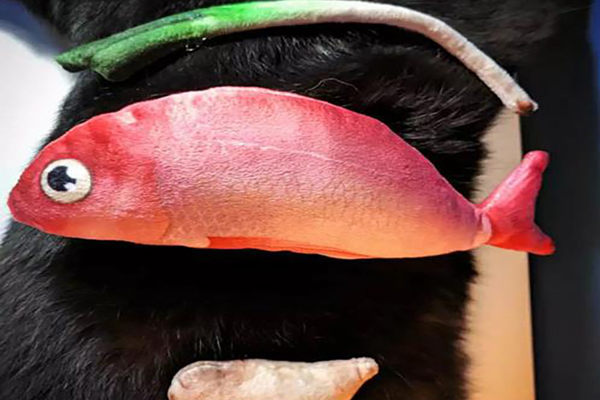There’s no doubt that all dogs love to play, but not all dogs know how to play with toys, and that’s where we need some Pointers. First, start with soft toys that the dog can easily grab and carry around. When we play with them, we try to focus on the toy rather than the dog, to appear excited and active, and encouragement is essential, even when they make small gestures to the toy. But be careful not to play for too long in the beginning and always keep the toy fresh for the dog. If a treat is placed in a toy as a reward, the dog will easily accept the toy and enjoy getting it. It may take some time to develop a dog’s play skills in this way, but it is very beneficial.
The most important thing about toys is the play itself. It is the owner who plays with the child, rather than leaving the toy cold on the ground and letting it play by itself. Toys don’t have to be bought, either. Owners can wrap newspaper around snacks for dogs to chew and search for, or ball around with newspaper for cats to kick. The most important thing is to play. With this awareness in mind, let’s look at how to choose toys.
The benefits of playing with toys can enrich a child’s life, improve the quality of life, and reduce the likelihood of them gnawing on slippers, socks, and breaking furniture. Happy baby, master rest assured!
The number one rule for all toys: safety
Toys are good, but they also need to be safe. Do not choose toys with plastic eyes, noses and other easy to bite down caused by misingestion toys. Toy plastic packaging should be discarded in time. Feather toys should not be left to cats to play alone, to prevent cats from swallowing.
Dog toy
1.Nibble toy
Providing less than half an hour of nibbling a day can help relieve anxiety, calm down and keep your dog happy. Chew toys can be made of tendon, cartilage, strong knots and other materials, not too hard to wear teeth, too small easy to swallow. And you can’t buy a toy that’s bigger than a dog’s head.
2.Leaky toys, sniff toys
Toys such as leaky balls, sniffing pads, and sniffing blankets can be fun for dogs to find, sniff, and even bite.

3.Ball and frisbee toys
Meet your dog’s need to run.

Cat toy
1.Cat scratching board
Cats in the wild like to climb trees and scratch the trunks. Not only is this done to get rid of old nails and grow sharper nails, but it’s also done to leave your scent and assert territory. (Secret pheromones from the meat balls of the cat’s claws) So provide one or two scratching boards and your cat will be very happy.
2.Cat-teasing stick
Laser pointer, electric mouse, lightweight ball
Running toys are favored by cats. These toys can increase the amount of exercise for cats, allowing them to chase, jump, and bite. Beware of fishing line, which can hurt your cat. Nylon or cotton string is a good choice. Feather toys should not be left to cats to play alone, to prevent cats from swallowing.
3.Catnip toys
Cats, already the envy of humans, have catnip, a happy potion that can be bought for a few bucks, a privilege denied to dogs. Toys that contain catnip can be of great interest to cats, who immediately collapse and refuse to let go. But catnip works for about 15 minutes, during which the cat loses its dignity and slobbers against the toy, then suddenly wakes up: Who am I? Where am I?

4.Cartons with holes
An artifact that can charm almost any cat and satisfy their delicate insecurities, even if they weigh 200 kilograms of brain rot! You can cut a hole in a regular cardboard box and instantly turn it into a cat land.



